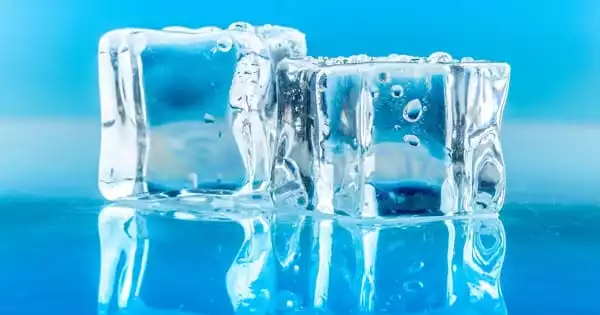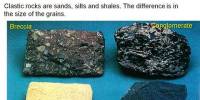UNLV researchers have found a new type of ice that reshapes the properties of water at extreme pressures. Solid water, or ice, is similar to many other materials in that it may create various solid materials depending on temperature and pressure circumstances, such as carbon-creating diamonds or graphite. Water, on the other hand, is remarkable in this regard, as we are aware of at least 20 solid forms of ice.
A team of scientists from UNLV’s Nevada Extreme Conditions Lab developed a new method for assessing the properties of water under extreme pressure. The water sample was initially squeezed between the tips of two opposing diamonds, causing it to freeze into a tangle of ice crystals. The ice was then heated with a laser, which temporarily melted it before swiftly reforming it into a powder-like collection of small crystals.
The scientists witnessed the water ice transition from a known cubic phase, Ice-VII, to the newly discovered intermediate, and tetragonal, phase, Ice-VIIt, before settling into another known phase, Ice-X, by gradually increasing the pressure and intermittently blasting it with the laser beam.
Scientists forced the oxygen and hydrogen atoms into a variety of various arrangements by compressing the water sample between these diamonds, including the newly discovered arrangement, Ice-VIIt.
Zach Grande
Zach Grande, a UNLV Ph.D. student, led the work which also demonstrated that the transition to Ice-X, when water stiffens aggressively, occurs at much lower pressures than previously thought. While it’s unlikely we’ll find this new phase of ice anywhere on the surface of Earth, it is likely a common ingredient within the mantle of Earth as well as in large moons and water-rich planets outside of our solar system.
The team’s findings were reported in the issue of the journal Physical Review B.
Scientists have discovered the 19th type of water ice. At ultra-low temperatures and ultra-high pressures, the unusual, four-sided crystals of this rare ice variation, now termed ice XIX, form. It can only be found in laboratory trials, but experts claim it reveals more about other types of ice that can be found deep in the Earth’s mantle and on very cold planets and moons.
Takeaways
The scientific team had been trying to figure out how high-pressure water behaves in the interiors of faraway planets. Grande and UNLV physicist Ashkan Salamat achieved this by sandwiching a sample of water between the points of two round-cut diamonds known as diamond anvil cells, a standard feature in the field of high-pressure physics. The researchers were able to duplicate pressures as high as those found at the Earth’s core by applying a small amount of force to the diamonds.

Scientists forced the oxygen and hydrogen atoms into a variety of arrangements by compressing the water sample between these diamonds, including the newly discovered arrangement, Ice-VIIt.
Not only did the first-of-its-kind laser-heating approach enable scientists to witness a new phase of water ice, but they also discovered that the transition to Ice-X happened at pressures roughly three times lower than previously anticipated – at 300,000 atmospheres rather than 1 million. For decades, this transition has been a hotly discussed topic in the community.
“Zach’s study has demonstrated that this change to an ionic state occurs at much, much lower pressures than was previously imagined,” Salamat explained. “It’s the missing piece, as well as the most precise measurements ever taken on the water under these conditions.”
Salamat said that the finding “recalibrates our understanding of the composition of exoplanets.” Researchers think that the Ice-VIIt phase of ice could be abundant in the crust and upper mantle of expected water-rich planets outside our solar system, implying that they could have life-supporting conditions.
Superionic water is a phase of water that exists at extremely high temperatures and pressures. It is also known as superionic ice or ice XVIII. Water molecules break apart in superionic water, and oxygen ions crystallize into an evenly spaced lattice, while hydrogen ions float freely within the oxygen lattice. Superionic water is a superionic conductor due to the freely mobile hydrogen ions that make it nearly as conductive as conventional metals. It is one of the 19 crystalline phases of ice known to science. Ionic water, a hypothetical liquid state characterized by a chaotic soup of hydrogen and oxygen ions, is not the same as superionic water.
















